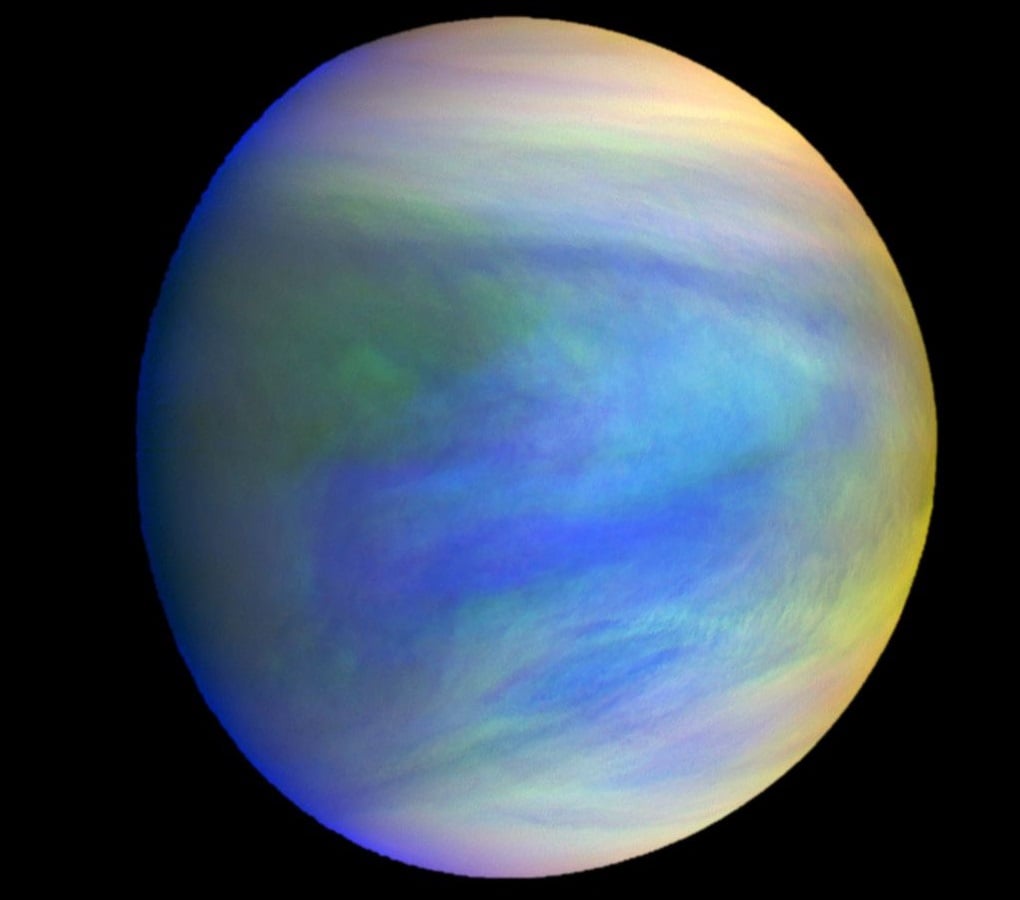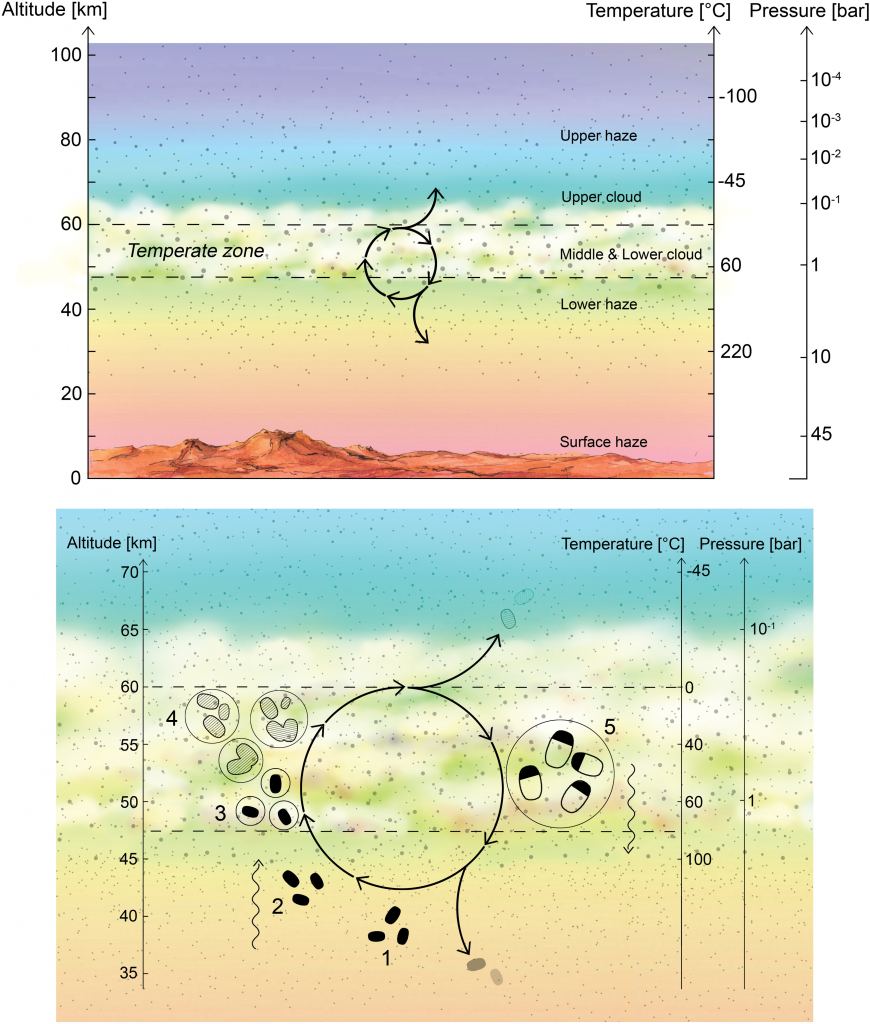When it comes to places with the potential for habitability, Venus isn't usually considered on that list. The hot, greenhouse-effect-gone-mad neighboring planet with a crushing surface pressure and sulfuric acid clouds certainly isn't friendly to life as we know it, and the few spacecraft humanity has sent to Venus' surface have only endured a few minutes.
But up about 40 to 60 km (25 to 37 miles) above the surface, the atmosphere of Venus is the most Earth-like of any other place in the Solar System. There, Venus has air pressure of approximately 1 bar and temperatures in the 0°C to 50°C range. It's not quite a shirtsleeves environment, as humans would need air to breathe and protection from the sulfuric acid in the atmosphere. Plus, also consider that Venus is considered to be in the habitable zone of our star.
So, is there a chance that other types of life could survive unaided in Venus' atmosphere? The question of whether microbes could survive there has long been speculated by planetary scientists, as far back as Carl Sagan in 1967. Another paper in 2004 studied how the sulfur in Venus atmosphere could be used by microbes as a means for converting ultraviolet light to other wavelengths of light that could be used for photosynthesis. Still another study in 2018 posed that the dark patches that appear in Venus' atmosphere could be something akin to the algae blooms that occur routinely in the lakes and oceans of Earth.
However, most previous studies concluded that any possible microbes in Venus atmosphere could have only a short lifespan: they would fall through the clouds into the lower haze layer, and end up incinerated in the heat and/or crushed in the higher atmospheric pressure that lies closer to the surface.
But now a new paper by astrobiologist Sara Seager and colleagues suggests that microbes could have a sustaining "life cycle," allowing them to survive for perhaps millions of years.
Their paper researches the possibility that microbes could live in the liquid environment inside sulfuric acid cloud droplets. As the droplet habitat in which the microbes reside grows, they would be forced by gravity to settle in the hotter, uninhabitable layer below the Venusian clouds. However, as the droplets begin to evaporate, the lower haze layer would become a "depot" for dormant life. Later, upward drafts would regularly lift the dormant microbes back into the clouds, where they would be rehydrated and become active again.
"Assuming that life must reside inside cloud droplets," the team wrote in their paper, published in the journal Astrobiology, "we resolve the subsequent conundrum of gravitationally settling droplets reaching hotter, uninhabitable regions by proposing a Venusian life cycle where a critical step is microbes drying out to become spores on reaching the relatively stagnant lower haze layer, which we call a leaky "depot." The dried out spores would reside there until some of them can be transported back up to the temperate, habitable cloud layers, where they would act as CCN to promote cloud formation, becoming enveloped in cloud droplets to continue the life cycle."
On Earth, terrestrial microorganisms – mostly bacteria – are capable of being swept into the atmosphere, where they have been found living at altitudes as high as 41 kilometers (25 miles).
There is also a growing catalog of microbes found to inhabit incredibly harsh environments on Earth, such as the hot springs of Yellowstone, deep ocean hydrothermal vents, the toxic sludge of polluted areas, and in acidic lakes worldwide.
The question of possible life in Venus' cloudtops now becomes a testable hypothesis. A co-author on this paper, Sukrit Ranjan, a postdoctoral fellow at MIT, told Astronomy, that "it's worth thinking about whether it's worth investing the resources to carry out that test," such as a sample return mission to Venus atmosphere.
While some have proposed floating Bespin-like cities in Venus' atmosphere, a more practical "glider" could float through Venus atmosphere, or the proposed VERITAS mission could maybe include an astrobiological study of Venus.
 Universe Today
Universe Today


